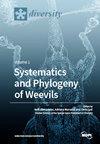Flea (Insecta: Siphonaptera) Family Diversity
IF 2.1
3区 生物学
Q2 BIODIVERSITY CONSERVATION
引用次数: 0
Abstract
This overview of extant Siphonaptera lists 19 families with major hosts and their general distribution, estimated numbers of genera, species, and subspecies, with a brief taxonomic and phylogenetic review. With around 10 new species described annually, extant flea fauna comprises an estimated 249 genera, 2215 species, and 714 subspecies globally, mostly mammal parasites, but 5% of species are on birds. Host specificity varies from euryxenous (i.e., infesting two or more host orders) (e.g., cat fleas, Ctenocephalides felis felis) to monoxenous (e.g., rabbit fleas, Spilopsyllus cuniculi). The largest family is the paraphyletic Hystrichopsyllidae, making up a third of all flea species. The largest monophyletic family, Ceratophyllidae (rodent and bird fleas), comprises another 20% and has dispersed to every continent, including Antarctica. Fleas descend from scorpionflies (Mecoptera), possibly snow scorpionflies (Boreidae) or Nannochoristidae, and even giant fossils found from the Mesozoic could be Siphonaptera. The diversification of fleas shows evidence of taxon cycles. “Relict” families, such as helmet fleas (Stephanocircidae), have a disjunct distribution reflecting the breakup of Gondwanaland 70 million years ago. “Niche specialists” include nest fleas (Anomiopsyllus), bat fleas (Ischnopsyllidae), and burrowing fleas, such as chigoes (Tungidae). By contrast, Ceratophyllidae fleas could be considered “great speciators”. Cat fleas and several other synanthropic flea species are invasive “supertramps”. Although those species are intensively studied, many flea species and their hosts require urgent surveys and conservation.跳蚤(昆虫纲:管翅目)科多样性
本文概述了现有的管翅目19科的主要寄主及其总体分布,估计的属、种、亚种数量,并对其分类和系统发育进行了简要的回顾。每年大约有10个新物种被发现,现存的跳蚤动物群包括249属,2215种和714亚种,主要是哺乳动物的寄生虫,但5%的物种在鸟类身上。宿主特异性从泛源性(即感染两个或两个以上宿主目)(如猫蚤,猫头蚤)到单源性(如兔蚤,cuniplopsilus cucululi)不等。最大的一科是副aphyletic Hystrichopsyllidae,占所有跳蚤种类的三分之一。最大的单系科,角蚤科(啮齿动物和鸟蚤),占另外20%,并已分散到包括南极洲在内的每个大陆。跳蚤是蝎蛉(甲翅目)的后代,可能是雪蝎蛉(Boreidae)或Nannochoristidae,甚至中生代发现的巨型化石也可能是Siphonaptera。蚤类的多样化表现出分类群循环的证据。“遗存”科,如盔蚤(Stephanocircidae),有一个不间断的分布,反映了7000万年前冈瓦纳大陆的分裂。“生态位专家”包括巢蚤(anomiopsilus)、蝙蝠蚤(Ischnopsyllidae)和穴居蚤,如恙螨(Tungidae)。相比之下,角鼻虫科跳蚤可以被认为是“大物种”。猫蚤和其他几种蚤类是入侵性的“超级流浪汉”。尽管对这些物种进行了深入的研究,但许多跳蚤物种及其宿主需要紧急调查和保护。
本文章由计算机程序翻译,如有差异,请以英文原文为准。
求助全文
约1分钟内获得全文
求助全文
来源期刊

Diversity-Basel
Environmental Science-Ecological Modeling
CiteScore
3.40
自引率
12.50%
发文量
925
审稿时长
11 weeks
期刊介绍:
Diversity (ISSN 1424-2818) is an international and interdisciplinary journal of science concerning diversity concept and application, diversity assessment and diversity preservation. It is focused on organismic and molecular diversity. It publishes reviews, regular research papers and short notes in the regular issues. Related news and announcements are also published. Our aim is to encourage scientists to publish their experimental and theoretical results in as much detail as possible. Therefore, there is no restriction on the length of the papers. Full experimental details must be provided so that the results can be reproduced.
 求助内容:
求助内容: 应助结果提醒方式:
应助结果提醒方式:


